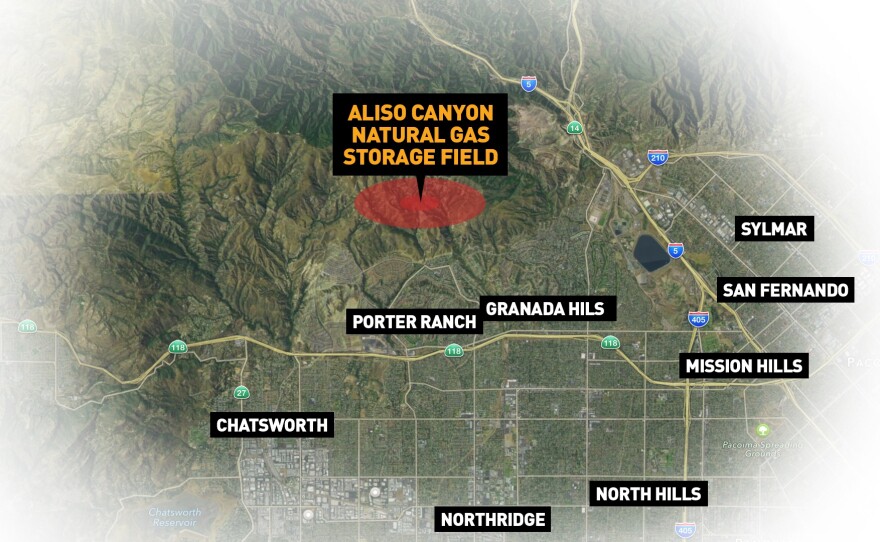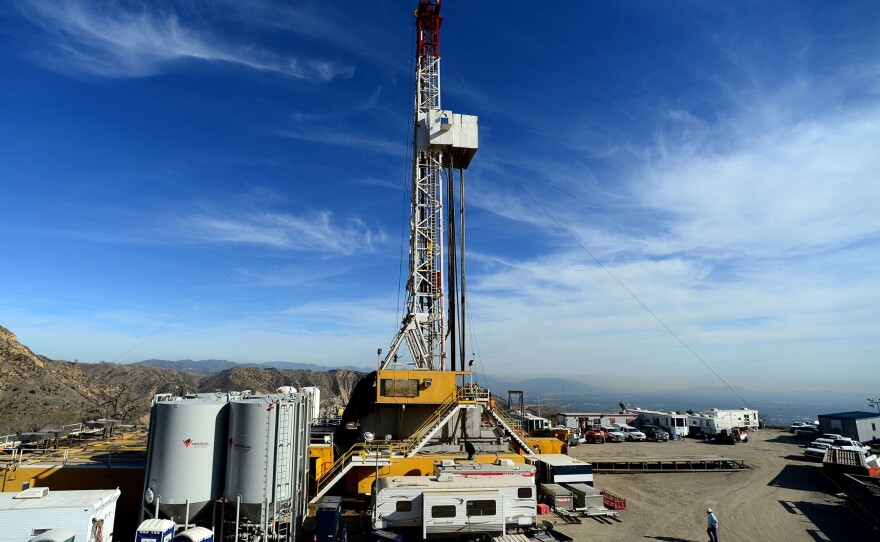Eight months after a failed natural gas well was finally brought under control in Los Angeles County, the cause of that disaster remains unknown.
RELATED: SoCal Gas To Pay $4 Million After Massive Gas Leak
The well pipe, or casing, is key to the investigation. It should tell how the failure occurred, through pits, abrasion, splitting or other damage. It may also tell whether a risky practice played a part. inewsource reported that when the release began last October, the well was being injected through both its tubing and casing, a practice the chief of the state oil and gas division said needed re-examination. It has since been restricted by state law.
Yet both the cemented and uncemented sections of the casing remain in the ground.
In order to pull up the casing, Blade Energy Partners will need to position over the well a powerful rig that’s capable of hauling up thousands of vertical feet of pipe.
Yet the ground around the well was damaged during the heavy action of trying to quell the blasting gas — efforts that repeatedly failed. Nearly 100,000 tons of methane escaped the Aliso Canyon gas storage field, owned by Southern California Gas Company. Methane is 84 times stronger than carbon dioxide in heating the atmosphere and is believed to be responsible for a considerable portion of the climate change already being felt.

Finally, a second well was drilled that intercepted the broken one about 8,000 feet below the surface. That allowed a flow of cement and mud that finally ended the catastrophic release.
But the attempts to kill the well from above had caused mud and gases to flow back up the sides of the steel pipe, blowing out a section of earth about 7 feet wide and 12 feet deep. That required repair.
“The well pad had to be rebuilt after all evidence on the surface was documented by the root cause analysis team. That process took several months,” said Don Drysdale of the California Division of Oil, Gas and Geothermal Resources.
Next, a rig was constructed on the new pad to pull the casing. Now “preparation efforts are underway to begin extraction of casing and tubing from the well,” said Terrie Prosper, director of news and community outreach at the California Public Utilities Commission. Attorneys for residents in nearby communities who have sued the gas company also have the chance to review the extraction plan.
The commission describes this root cause analysis as taking place in five phases. It says Blade Energy Partners is now in the second of those five.
Extraction is phase three. The inner steel tubing in the well and the upper, uncemented section of casing will come out first.
On its website SoCal Gas, a subsidiary of San Diego’s Sempra Energy, said the investigation is expected to be completed in the first half of 2017. The company did not respond to a request for an interview.
Restarting injection of gas into its large gas storage field is a priority for SoCal Gas so that it may withdraw gas through winter. Working toward that goal for months, it has conducted extensive well testing and parts replacement. The company estimates it has installed 40 miles of new piping in wells slated for reopening.







